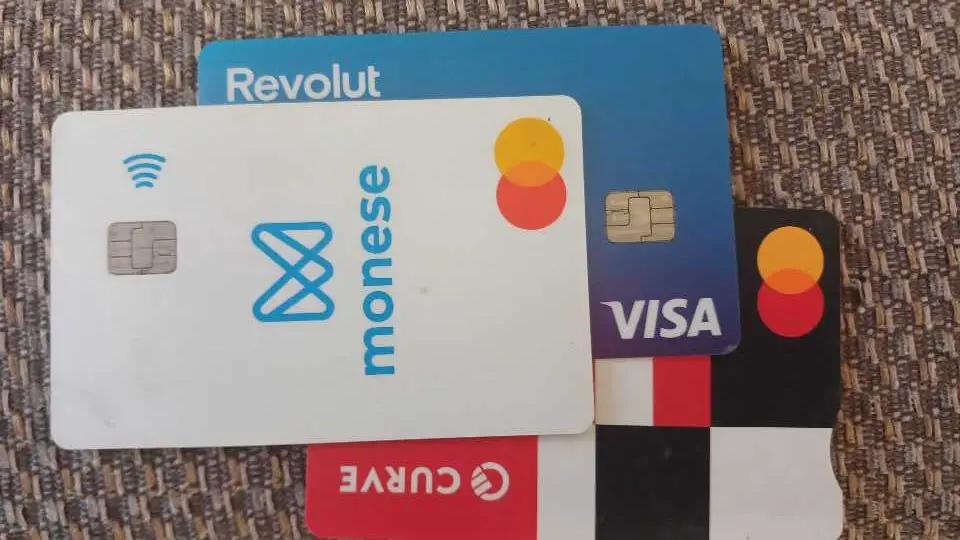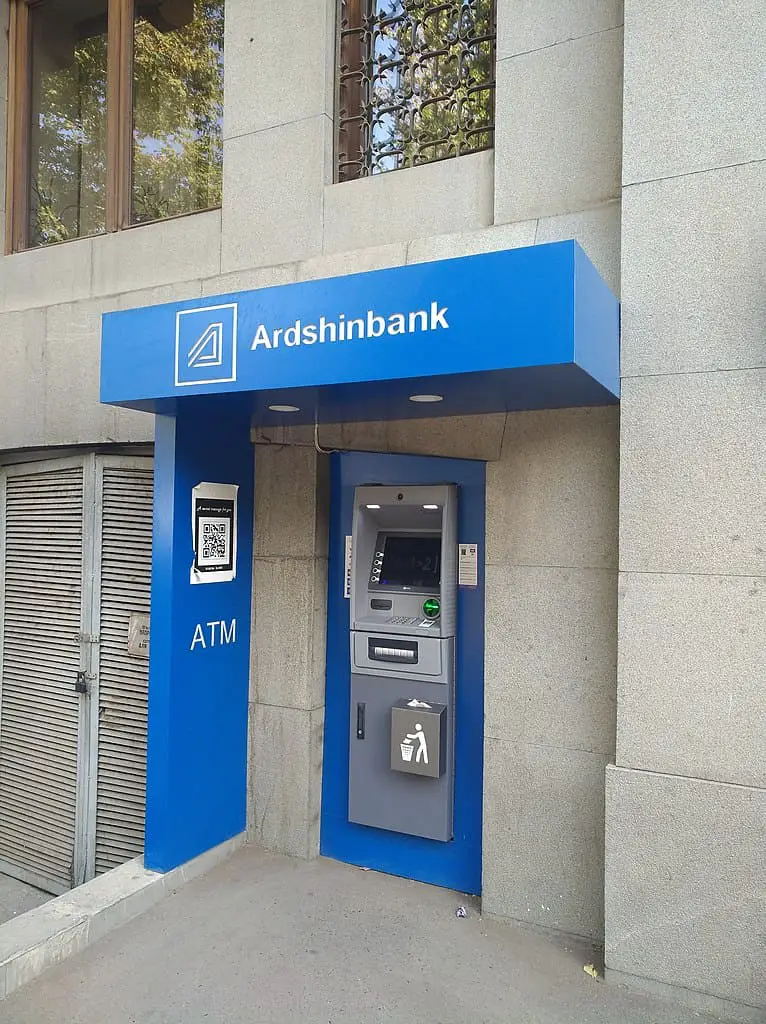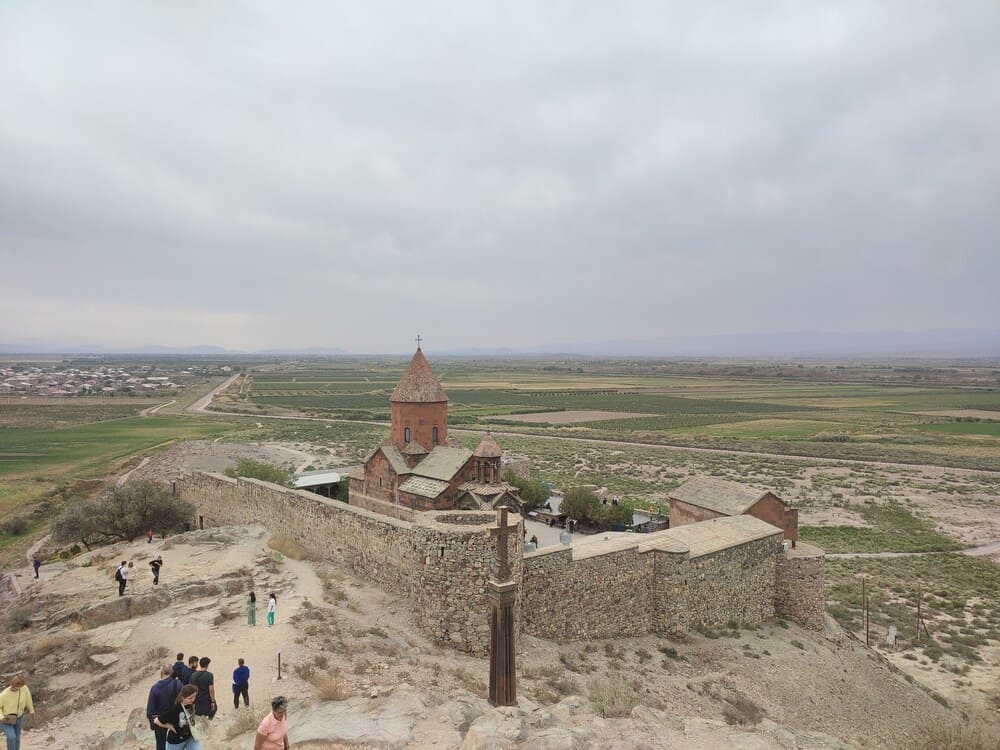Money in Armenia: A Tourist Guide to ATMs, Cards and Exchange
This post may contain affiliate links. If you make a purchase using one of these links, I may receive a small reward at no extra cost to you. See my Disclosure Policy for more information.
If you’re traveling to Armenia for the first time and wondering about the money situation then you’ve come to the right place.
Return travelers – I assure you there’s something about withdrawing money from ATMs, exchanging currency, and paying by card for you too.
Here’s a quick summary:
| Best foreign currency to bring | USD, Euro |
| Where to exchange? | Banks, exchange bureaus (usually 1 at supermarket entrances) |
| ATMs without a fee | Pretty much all of them |
| Can you use Revolut, Wise, Monese, etc? | Yes! |
| Cash or card? | Mostly cash |
This is the full guide to money in Armenia for tourists!
Currency in Armenia
The currency in Armenia is the Armenian Dram with code AMD.
It was introduced in 1993 to replace the Russian Rouble. It has been relatively stable since then.

The Armenian Dram coins are 10, 20, 50, 100, 200 and 500 dram.
The banknotes denominations are 1000, 2000, 5.000, 10.000, 20.000, 50.000, and 100.000 AMD. The biggest banknote (100.000 AMD) is worth around 250$ so you don’t have to carry a pile of cash like how you would with money in Uzbekistan.
Can you use your card in Armenia?
Yes, you can use your foreign card to pay for most things in Armenia.
There is a huge difference between Yerevan and the rest of the country. In the capital, most places accept card payments while in the countryside, Armenia is mostly a cash-based society.
Gyumri is also modernizing and bigger supermarkets, hotels, and restaurants will accept cards. In the other cities, be prepared to pay in cash!

Visa and Mastercard are accepted universally in Armenia. Other types of cards (American Express, Maestro, Cirrus, Diners Club, etc) may be accepted in some places but not in others.
ATMs in Armenia
There are hundreds of ATMs in Yerevan and more than enough in most other cities.
Smaller villages usually do not have ATMs. Remote monasteries and the countryside are not well-connected to the ATM network yet.
If you’re going to Geghard Monastery or Khor Virap, prepare cash beforehand – there are no ATMs there.

The maximum withdrawal amount on most ATMs is 100.000 AMD with a daily limit of 500.000 AMD (~1250$). The daily limit is enough to last you a month in Armenia!
Withdrawal Fees
Here comes the tricky part – avoiding those pesky ATM withdrawal fees. I’m not talking about the fees charged by your bank – those you can avoid by using a FinTech solution like Revolut, Curve, or Monese.
Most ATMs in Armenia do NOT charge a withdrawal fee!
ATMs without withdrawal fees
The best ATM for travelers to withdraw money in Armenia is Ardshinbank. It charges no fees and has an extensive network of ATMs across the country.
Other banks that charge no fees for cash withdrawals at their ATMs include:
- VTB
- Armeconombank
- ACBA
- Unibank
Avoid Converse Bank – it charges a 40 AMD fee (not a lot but none of the other banks charge any).

Never accept currency conversion offered by the ATM! Refuse and let your own bank to the exchange at a much, much better rate.
Withdrawing foreign currency in Armenia
Withdrawing any foreign currency in Armenia using a foreign card is not possible.
If you need USD or EUR the only way is to withdraw AMD and exchange for the currency you want.
Exchanging Money in Armenia
You don’t have to exchange money in Armenia if you have a card with low fees like Revolut or Monese. You can pay with it in many places and withdrawing without a fee is quite easy. I didn’t exchange any cash during my time in Armenia.
Nonetheless, if you prefer to carry foreign currency and exchange inside the country, here’s how to be prepared.
What currency to bring
The US dollar and the Euro are the best currencies to carry to Armenia as the exchange rates have the smallest margins.
You will have no issues exchanging these currencies too:
- Russian Rouble
- Georgian Lari
- British Pound
- Chinese Yuan
If your currency is not on the list, just use your card instead – you will save money compared to exchanging twice (once to USD/EUR and once more to AMD).
Where to Exchange Money
More than 90% of foreign visitors start their journey in Armenia in the capital Yerevan which is convenient as it’s the best place to exchange money. Banks, exchange bureaus, tour agencies, and hotels all offer this service at variable margins.
You can exchange money in Armenia at:
- Banks (Easiest and lowest margins. Bring your passport!)
- Exchange bureaus in a city (Best rates)
- Airports (worst rates)
- Hotels (just okay)
- Tour Agencies (bad rates considering there’s usually a bureau or a bank nearby)
Tips for Changing Money in Armenia
Most of these are common sense and not any different from other countries. Here are my top tips:
- Higher denominations of USD usually yield higher rates;
- 500 EUR banknotes are very hard to exchange, usually only at banks’ head offices
- Damaged banknotes = lower rates + fee (if accepted at all);
- Don’t accept foreign banknotes with ANY damage (if changing AMD back to USD for example);
How much cash to bring to Armenia?
This depends on your way of traveling and your budget. You can withdraw cash easily in Yerevan using your card, so no need to carry too much physical cash.
My advice is to have at least 200$ just in case something goes wrong with your bank cards and you need emergency cash until you sort it out.
When I went to Armenia I used my Revolut and Curve cards to withdraw dram and didn’t exchange at all. Since most ATMs don’t charge access fees, it’s convenient to take out small amount every few days.
On the other hand, if you’re wondering how much money you need to travel to Armenia and how much I spent, you can check out my backpacker’s budget report for Armenia.
Example prices
Armenia is quite cheap! You can backpack across the entire country for less than 25$ per day!
These are the price ranges for some common purchases:
- Fast food meal (kebab, sandwich, or similar): 800-1500 AMD
- Restaurant meal: 2000-3000 AMD
- Beer: 600-800 AMD
- Museums: 500-1000 AMD
- Coffee from a street machine (they are everywhere): 50-100 AMD
- Public transportation: 100 AMD
- Intercity marshrutkas: ~1000 AMD per 100 km
- Budget hostel: 3000-6000 AMD
- Mid-range hotels – 10.000-15.000 AMD
- Half-day group tour – 12.000-20.000 AMD
- Travel Insurance from SafetyWing (covers you in Armenia): ~22 USD for a 10-day trip.

See my budget report for Armenia for more details.
Bargaining
You will rarely have to bargain in Armenia. Moreover, haggling is a faux pas in many places across Armenia!
The Armenian people are sensitive to “no’s” and attempts to bargain may be met with disapproval or offense, or both.
Tipping
Tipping is not mandatory in Armenia.
In restaurants, there is usually a service charge of 10-15% on top of your bill. That acts as a tip in some ways.
Yerevan has seen a tourism boom in recent years and service sector employees have come to expect some tips. 10% is fair.
Outside of the capital, tipping is a lot less common but appreciated! An additional 1-2$ may make somebody’s day in rural Armenia!

Frequently Asked Questions
Let’s answer some of your most burning questions about money in Armenia.
What is the ATM withdrawal limit in Armenia?
The highest withdrawal limit on ATMs in Armenia is 500.000 AMD (~1250$).
Can you use US dollars in Armenia?
No, you cannot use US dollars to pay for things in Armenia. Universally, the only accepted currency is the local Armenian Dram.
Can you use Revolut in Armenia?
Yes, Revolut cards work in Armenia. Both VISA and Mastercard work. You can withdraw from ATMs and pay on POS terminals with your Revolut card.
Similar fintech apps like Wise, Monese, Curve, N26, and Starling also work there.
Money guides for other Caucasus countries:

